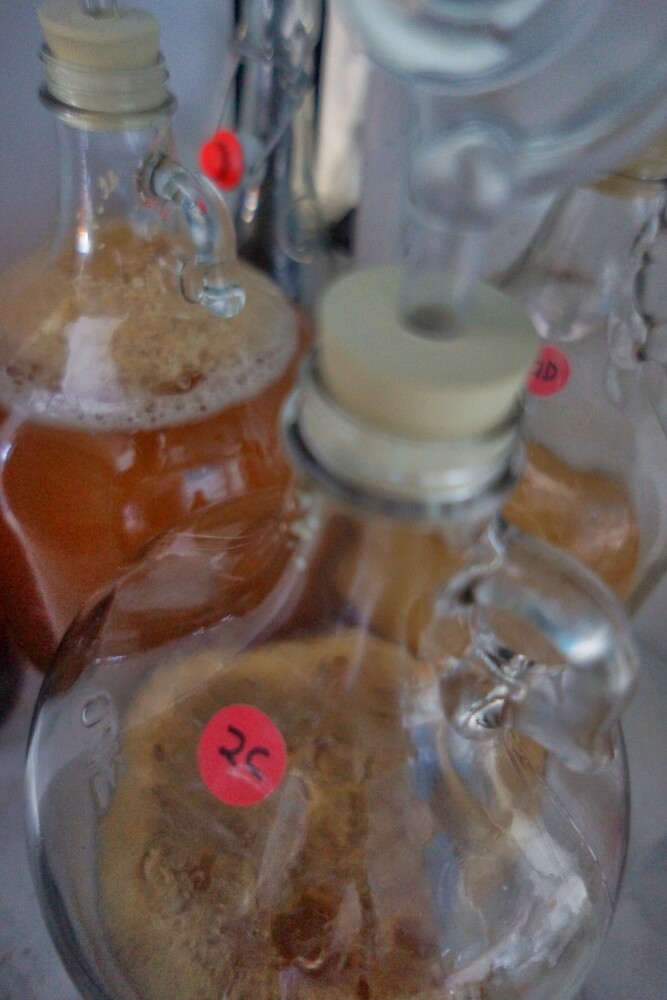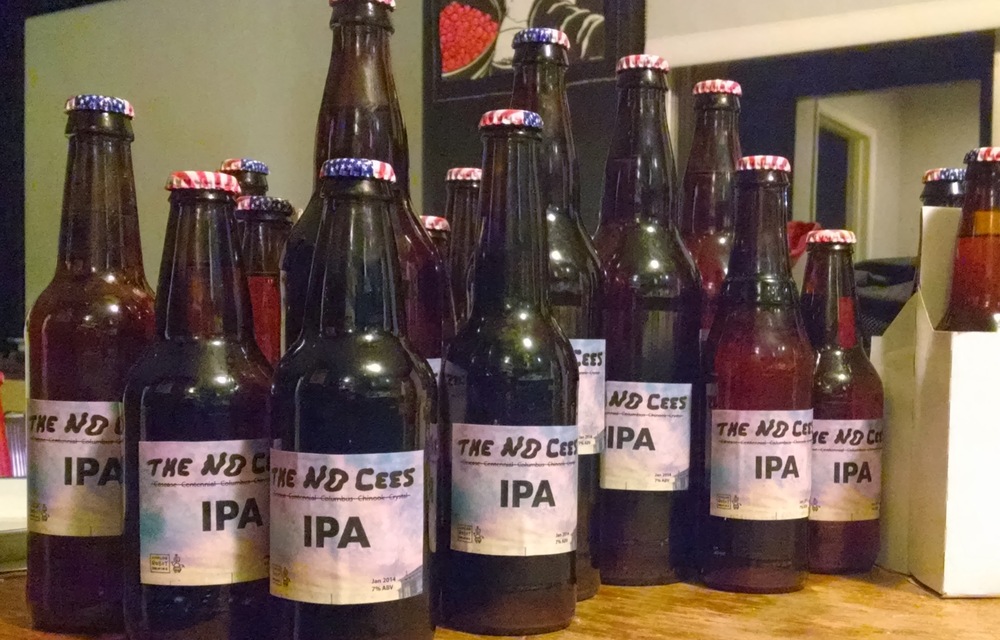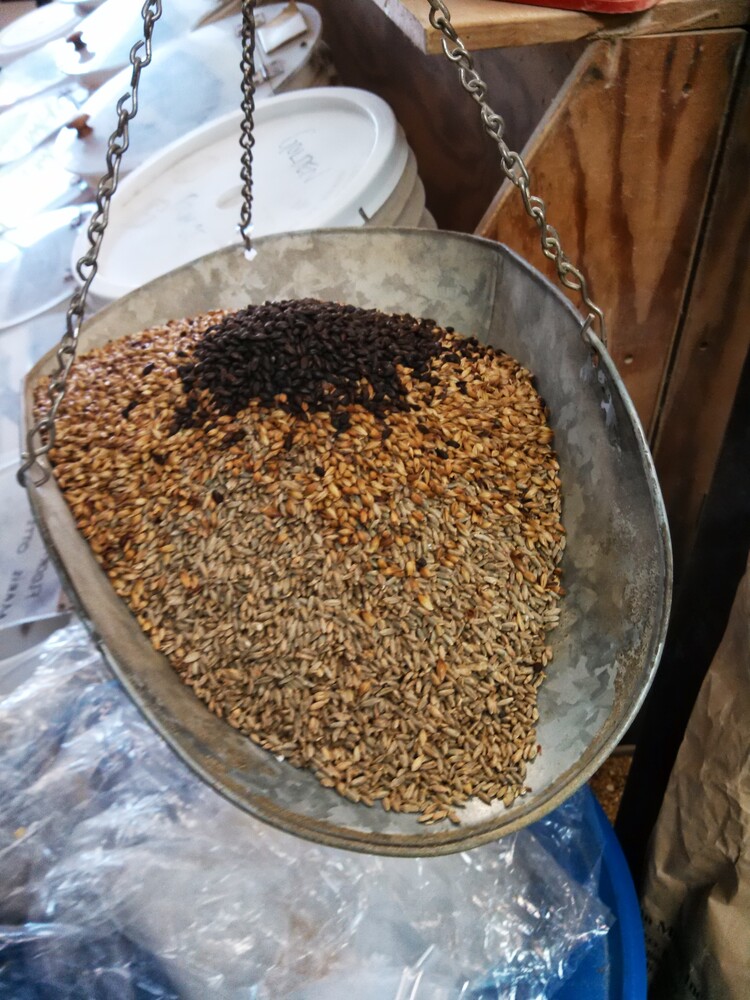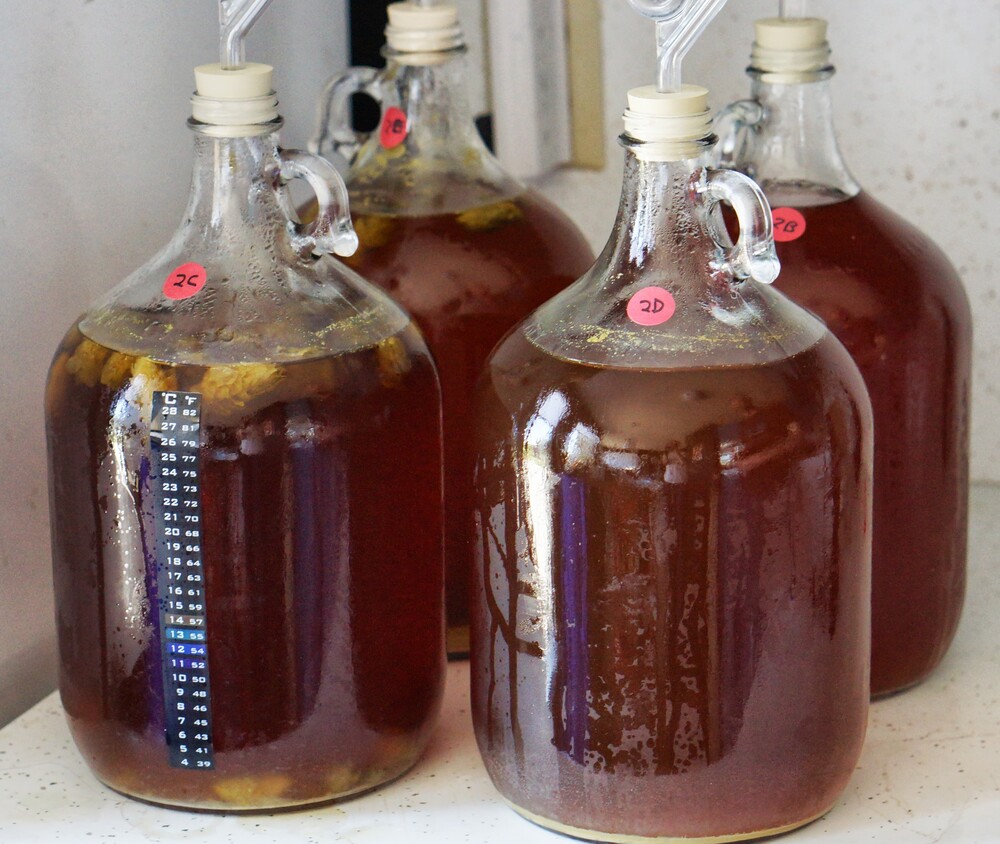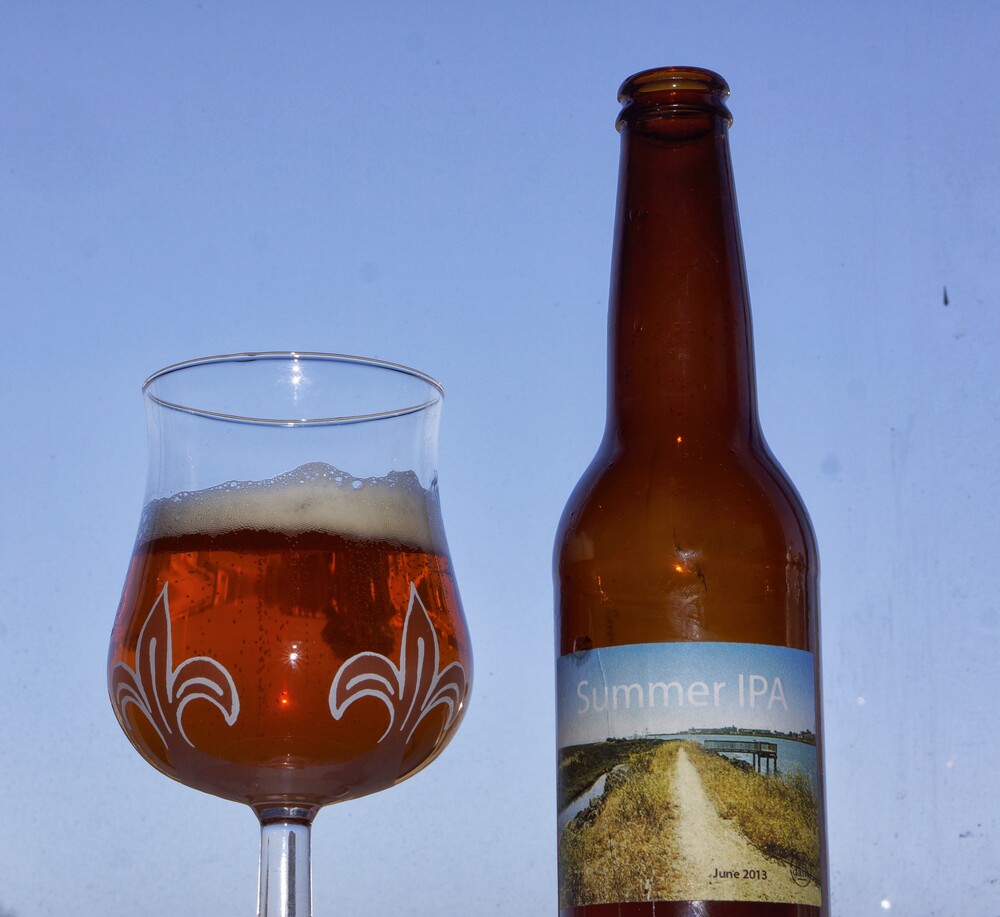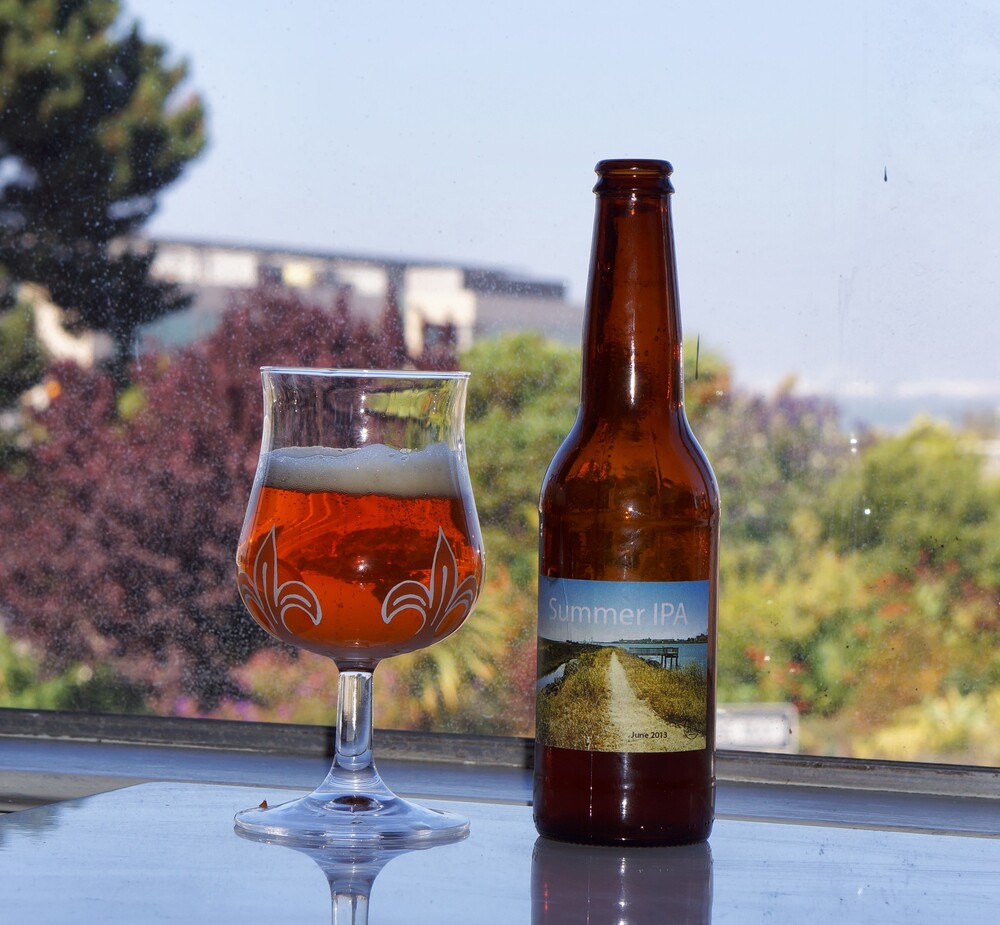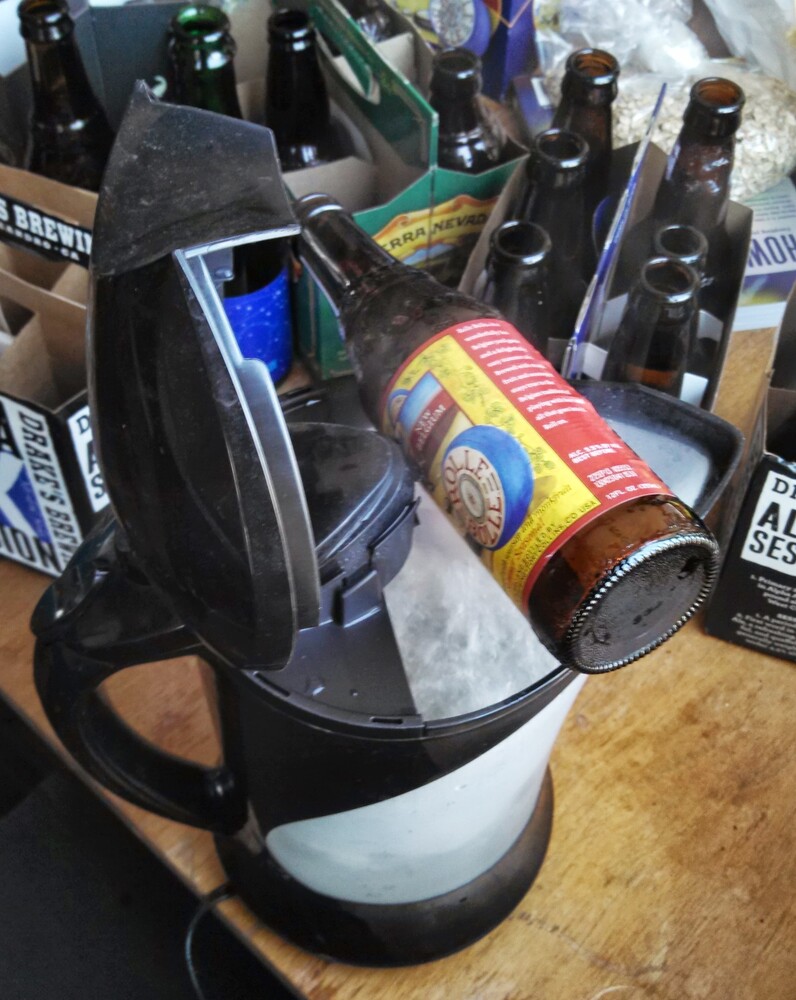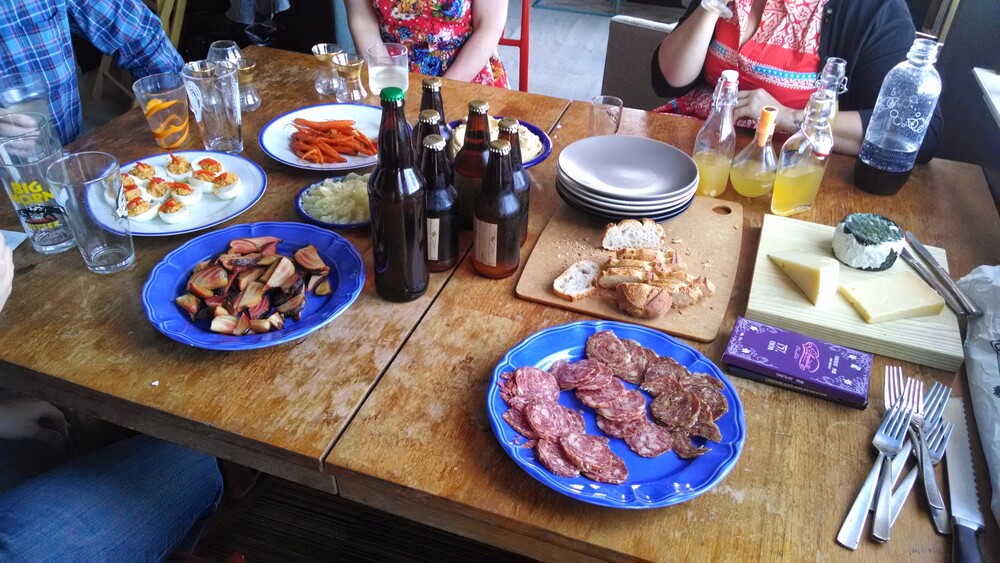
Homebrew, Cider, Snacks
What was going to be “an informal bread, cheese, and homebrew hard cider tasting” expanded a bit, as it always does. Highlights were the small carrots roasted in cider, the hummus made with plenty of garlic and a little cider vinegar in lieu of lemon juice, #3 of the hard cider experiments (made with unpasteurized cider and champagne yeast), the fennel salami mail-ordered from Seattle (which I’ve wanted to do ever since having it on a trip) and the Russian Imperial Stout (rich, coffee-like, well-hopped (not actively bitter but it kept the alcohol in check), 10% ABV, aged 4 months so far since brewing and really supposed to go 6+). ...
